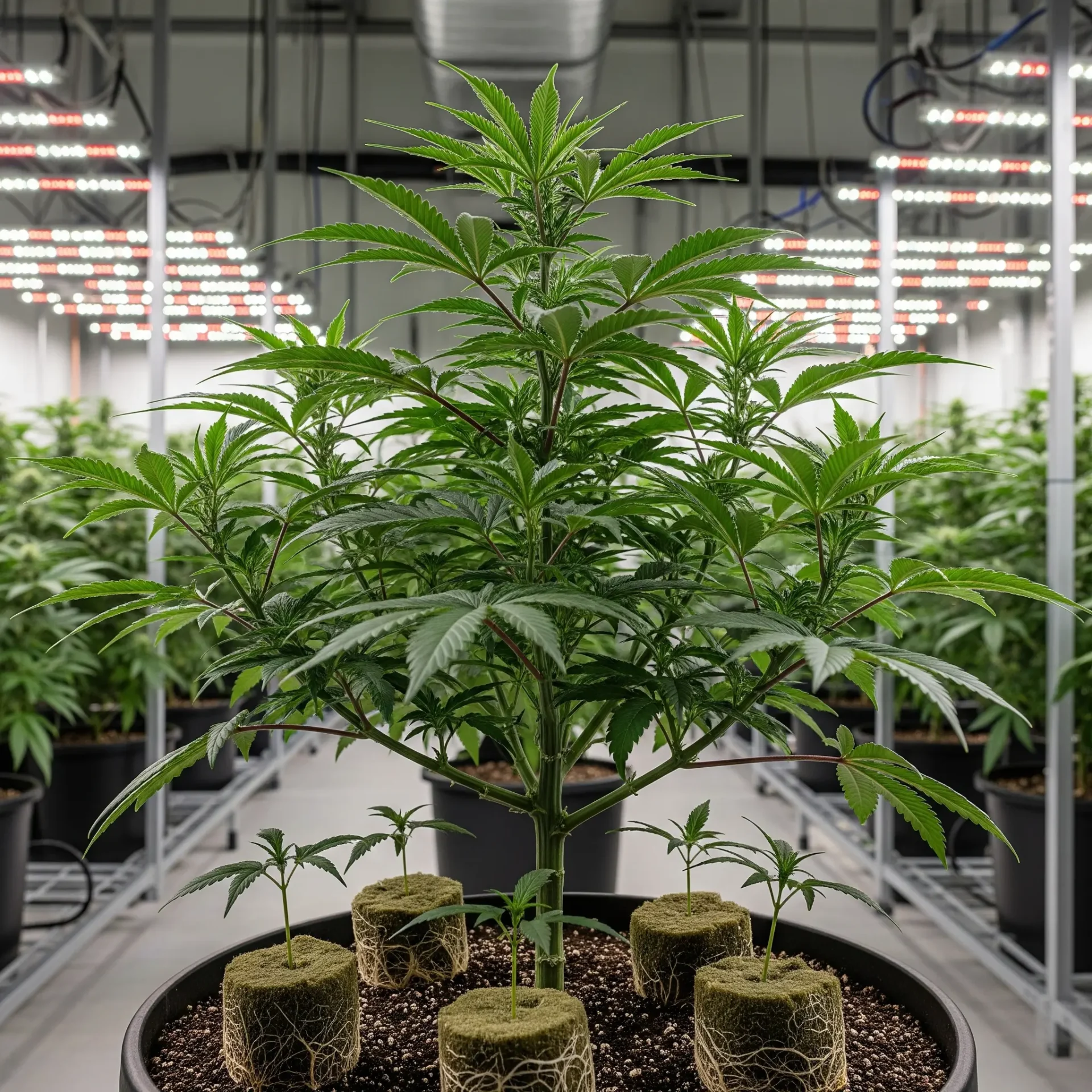Why the choice of mother plant is crucial
The mother plant is the heart of your cannabis breeding. All clones originate from it – its genetics therefore determine the quality, yield and resistance of your future plants. But what should you look out for?

Common mistakes in the selection process
- Immediate decision: Many growers select the first vigorous plant without observing its long-term development.
- Ignorance of stress factors: A plant that reacts sensitively to light stress or nutrients passes these weaknesses on to its clones.
Criteria for the ideal mother plant
1. genetics and stability
- Assumption: “A fast-growing plant is automatically the best choice.”
Counterargument: Rapid growth can go hand in hand with unstable genetics. Test the plant over several generations to see if it remains consistent.
2. growth behavior
- Branching: Bushy plants with many nodes are ideal – they produce more cuttings.
- Internode spacing: Short spacing indicates compact growth (advantageous for indoor grows).
3. resilience
- Pest resistance: Did the plant ward off aphids or mildew during the veg phase? Such properties are worth their weight in gold!
- Nutrient tolerance: How does it react to overfertilization? Robustness will save you problems later on.
Practical tips for selection
- Test phase: Observe the plants for at least 4-6 weeks before making a decision.
- Backup plan: Keep several candidates in reserve – in case the “main mother” blooms unexpectedly.
- Alternative approach: Some growers prefer “monster cropping” (clones of flowering plants) in order to obtain particularly strong mothers.
Long-term care of your mother plant
- Light cycle: Always keep them on an 18/6 hour cycle to prevent flowering.
- Nutrients: Use nitrogen-rich fertilizers for healthy leaf growth.
- Size control: Regular pruning keeps the plant compact and promotes new shoots.